The AMD Ryzen 3 3300X and 3100 CPU Review: A Budget Gaming Bonanza
by Dr. Ian Cutress on May 7, 2020 9:00 AM EST*We are currently in the middle of revisiting our CPU gaming benchmarks, but the new suite was not ready in time for this review. We plan to add in some new games (Borderland 3, Gears Tactics) and also upgrade our gaming GPU to a RTX 2080 Ti.
Gaming: Ashes Classic (DX12)
Seen as the holy child of DirectX12, Ashes of the Singularity (AoTS, or just Ashes) has been the first title to actively go explore as many of the DirectX12 features as it possibly can. Stardock, the developer behind the Nitrous engine which powers the game, has ensured that the real-time strategy title takes advantage of multiple cores and multiple graphics cards, in as many configurations as possible.
As a real-time strategy title, Ashes is all about responsiveness during both wide open shots but also concentrated battles. With DirectX12 at the helm, the ability to implement more draw calls per second allows the engine to work with substantial unit depth and effects that other RTS titles had to rely on combined draw calls to achieve, making some combined unit structures ultimately very rigid.
Stardock clearly understand the importance of an in-game benchmark, ensuring that such a tool was available and capable from day one, especially with all the additional DX12 features used and being able to characterize how they affected the title for the developer was important. The in-game benchmark performs a four minute fixed seed battle environment with a variety of shots, and outputs a vast amount of data to analyze.
For our benchmark, we run Ashes Classic: an older version of the game before the Escalation update. The reason for this is that this is easier to automate, without a splash screen, but still has a strong visual fidelity to test.
Ashes has dropdown options for MSAA, Light Quality, Object Quality, Shading Samples, Shadow Quality, Textures, and separate options for the terrain. There are several presents, from Very Low to Extreme: we run our benchmarks at the above settings, and take the frame-time output for our average and percentile numbers.
All of our benchmark results can also be found in our benchmark engine, Bench.
| AnandTech | IGP | Low | Medium | High |
| Average FPS | 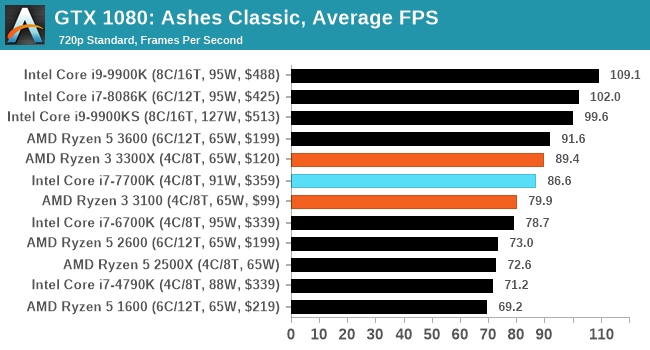 |
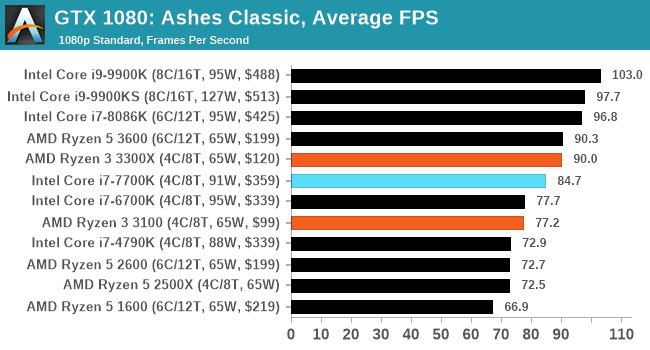 |
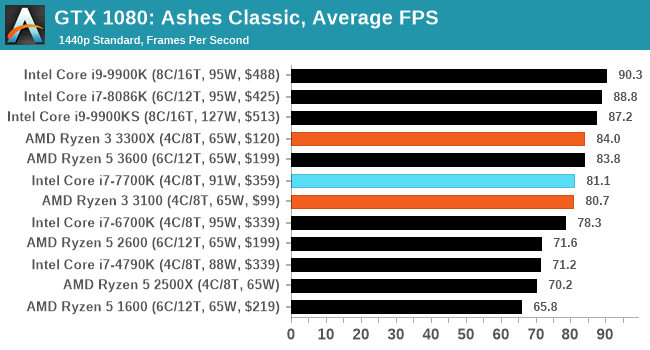 |
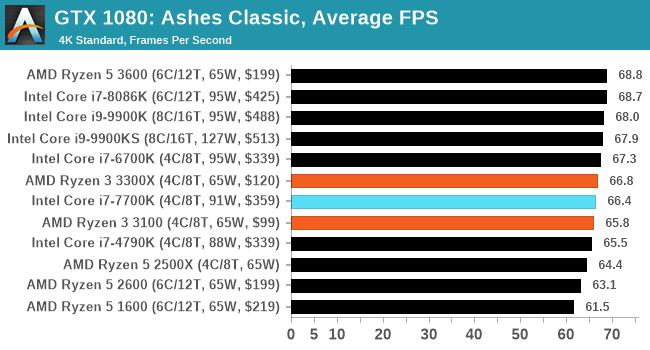 |
| 95th Percentile |  |
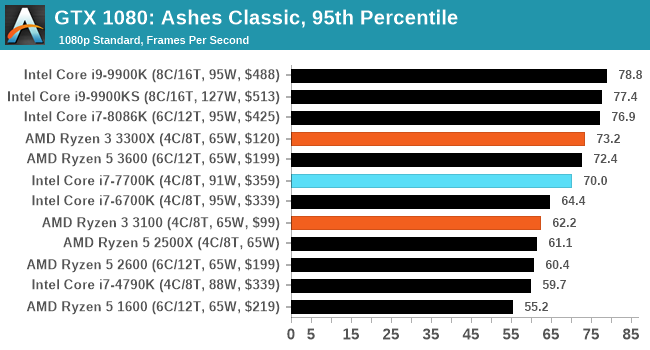 |
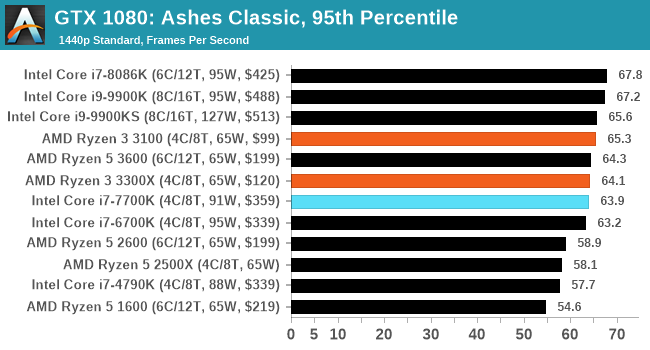 |
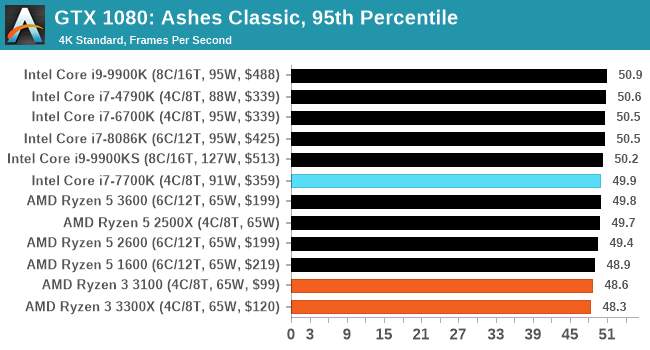 |


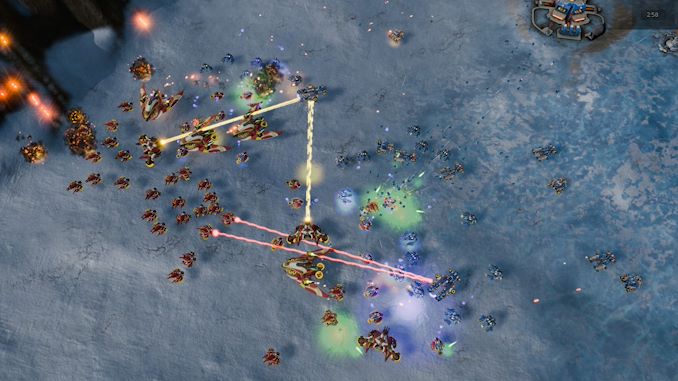









249 Comments
View All Comments
Ian Cutress - Thursday, May 7, 2020 - link
Unfortunately, we never got any of those. I'm recently stretched six ways from Sunday. Pulled an all-nighter just to even get to this point in the review process. As much as people would love me just to bench CPUs all day every day, even in lockdown I've got these CPUs, EPYC, Motherboards, Xeons, laptops to test, as well as news coverage and all the behind the scenes stuff no-one ever sees. Writing isn't a quick process, either.destorofall - Thursday, May 7, 2020 - link
Surely Ian you can just use the AI wirter now :)Lord of the Bored - Thursday, May 7, 2020 - link
The AI Writer read the comments and now just fanboy-flames.eastcoast_pete - Thursday, May 7, 2020 - link
Appreciate the reply! I think the fact that you never got those current-gen i3s and i5s is not on you, but on Intel. If they want their stuff reviewed, they know they need to send some samples. Unless, of course, they're afraid of the test results. Which they might just be.Namisecond - Thursday, May 7, 2020 - link
I just noticed in the "AMD 500 SERIES CHIPSET PROCESSOR SUPPORT" chart; 4000 series/Zen2 based desktop APUs are not represented. An oversight? or is AMD trying to say something?qwertymac93 - Thursday, May 7, 2020 - link
There's got to be something strange going on with the 7700k system. In several benchmarks the 6700k outperforms the 7700k, even though the only difference between them is the 7700k is clocked higher. Under no circumstances should the 6700k outperform the 7700k.Were the Skylake and Kaby lake systems tested with different motherboards or with different BIOS revisions? Its possible some security patch was active on one system but not on another.
EdgeOfDetroit - Thursday, May 7, 2020 - link
You should have benched it against a Xeon E-2174G. At least that's the most modern 4C8T CPU Intel sells right now. But I look forward to seeing how it does against the i3-i3-10320 to see if Intel still has the IPC-clockspeed crown or not.schujj07 - Friday, May 8, 2020 - link
The performance of the i3-10320 will be very similar to the 7700k. The i3 has clock speeds of 3.8/4.6 and the 7700k is 4.2/4.5. That means that on single threaded the 10320 will be slightly faster but in heavily threaded work loads the 7700k will probably be faster due to the higher base clock. This is know because both CPUs are on the Sky Lake architecture and will have the same IPC. Therefore we can infer what the 10320 will do based on what we see the 7700k doing in this review.Sushisamurai - Thursday, May 7, 2020 - link
I think it'd be nice to see generational to generational improvements on intel vs AMD's side of things, you guys use to do that everytime a new generation came out. It'd be nice to see how far my 4th gen Intel chip has gone vs a new gen now.Maxiking - Thursday, May 7, 2020 - link
Again your garbage reviews. Apparently all the cpus on the world are bottlenecking 1080 gtx @ 1080p except 3300x.Do you even think when checking the results. This thing happens constantly, especially when you test low end garbage amd cpus.